
Lot 280
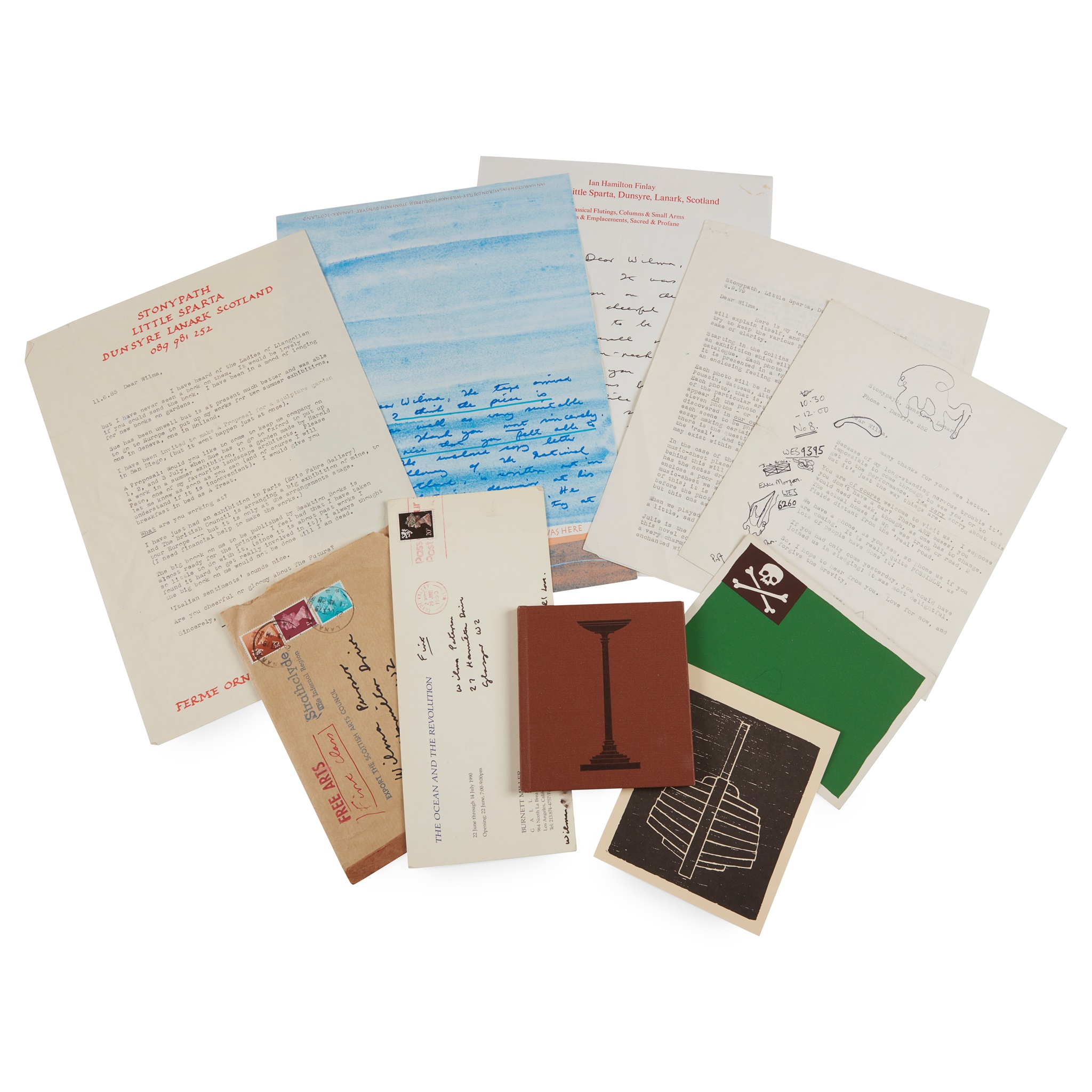
Finlay, Ian Hamilton (1925-2006)
An extensive collection of letters, sent to Wilma Paterson
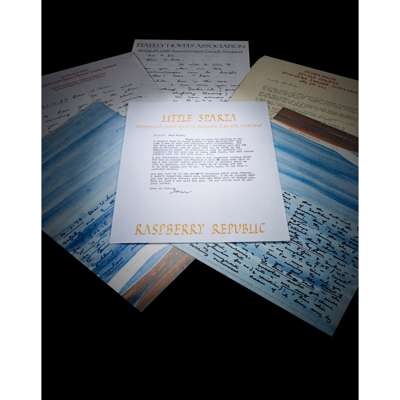
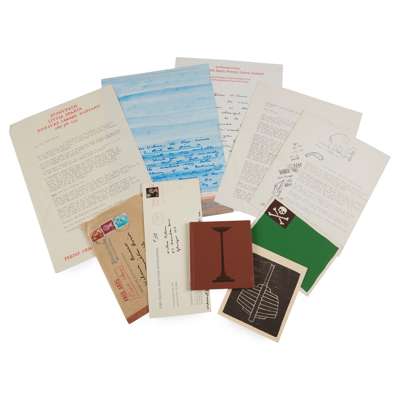


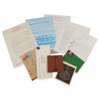
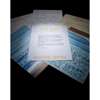
Rare Books, Manuscripts, Maps & Photographs
Auction: 21 June 2023 at 11:00 BST
Description
Over 50 letters, dating from the 1970s to 1990s, many typed and several handwritten, all signed; many small items of ephemera, such as small Christmas cards, including: ‘National Flags Series, Arcadia’, referred to in one of the letters, with a hand-drawn skull and crossbones to the reverse; 1990 Little Sparta Christmas Card [potatocut robin/linocut garden fork/ wood-engraved tree] contained in small manilla envelope printed ‘A Valentine’; Thomas Jefferson’s Garden Book, 1986, with image of a pear; ‘Larder’, a small book of words on orange and green;
Finlay, Ian Hamilton. Wildwachsende Blumen… Staedtische Galerie in Lenbachhaus, 1993. Small 12mo, original brown cloth
Footnote
Note: Ian Hamilton Finlay’s complex and wide-ranging practice resists categorisation. He became the leading proponent of 'concrete poetry', employing words and poetic forms for visual effect. Finlay's writing was thus his art, and this took another turn when he applied his poetic-artistic theory to gardening, creating Little Sparta at his home in Stonypath, South Lanarkshire, from the md-1960s onwards. Ian Hamilton Finlay's vision of art encompassed the meeting of poetry, visual art, gardening and sculpture, and his relationship with The Establishment was far from straightforward. He famously once wrote: "If I hear the words Arts Council, I reach for my water pistol", however his deviation from recognised artistic norms has meant that his output can be described as one of the most significant contributions to Scottish art of the 20th century. As a conceptual artist, he often devised projects, rather than making them himself, and employed collaborators to bring his ideas to life.
The archive presented here is candid and highly personal, written by Ian Hamilton Finlay to one of his collaborators, Wilma Patterson. The collection documents a close and lasting friendship between the pair, displaying Hamilton Finlay's slightly cantankerous, yet caring, nature. Several of these letters are addressed to Paterson in her capacity as a musician: Hamilton Finlay hoped to create a film entitled 'Fifies and Zulus', with Paterson's collaboration, in addition to a potential suite of 'national anthems' to accompany his 'national flags' series.
Alongside providing a record of Ian Hamilton Finlay’s work with Wilma Paterson, the archive reveals much about Hamilton Finlay's passions, insecurities and moods. Writing in 1990, Hamilton Finlay declares:
I am about to be in the middle of my big Berlin project, which will be wonderful if it is realised, but nowadays I get into gloomy moods in which I think, Well, how super this could be, but of course I wont [sic.] live to see it realised…..
and in another, undated, letter:
Do you ever feel you are a genius? I do, quite often. Other times I think I am just hopeless.
Ian Hamilton Finlay’s letters often have a humorous, sardonic tone, which can be seen here. He does not shy away from self-congratulation, often ironically, writing in 1974 (regarding his ‘National Flags’ series of postcards):
The wit (of course) consists in my (inspired) realisation that the skull in the Poussin painting has exactly the weight/force of the skull in the Pirate Flag…
Other notes reference some of his well-known works, such as this bizarre occurrence relating to his Diana and Actaeon on 1st December 1992:
My missing monument to Annette von Droste-Hulshoff, which was stolen from a tree in Munster in 1987, has been found! (Did I tell you this?) It was in the garden of a lady who thought herself on very good terms with the Transcendental and supposed that my plaque arrived in her garden as a message to her from The Beyond.





